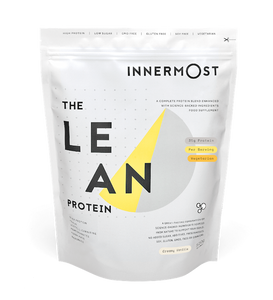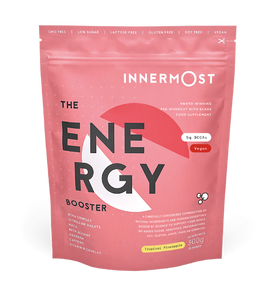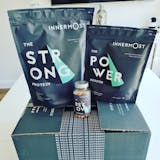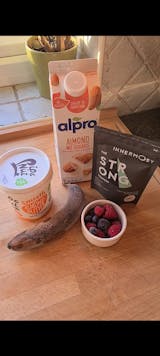After a workout, there are a range of things you should be doing to not only aid recovery, but prevent injury, build healthy habits, and have a healthy, happy body.
Wondering what to do after working out? Not sure what to eat after a workout? Looking for advice around how to integrate protein after a workout? Never fear.
From steps to take immediately after your workout, to an hour after and so on, we’ve simplified the list into four essential steps to take after a workout. Oh, and make sure you take The Recover Capsules. Of course. But that’s a given.
1. Stretch
Whilst it may be tempting to skip this step – maybe you don’t have time, or maybe you just can’t really be bothered, one of the first things you need to do immediately after a workout is stretch and warm down. Stretching after a workout doesn’t take long (even if it might feel like it does), and this process is absolutely vital in terms of minimising your risk of injury, particularly after a heavy weight session, long run or intense stint.
Whilst our absolute go-to stretches are all included in the 8 Must-Know Yoga Poses For Total Beginners, it’s important to focus your stretches and attention on the muscles you have been working. If you’ve just gone on a 5k run, make to stretch your quadriceps, hamstrings, and calf muscles. On the other hand, if you’ve been engaging in weight-lifting exercises such as bench presses, target your laterals and pectorals.
If you need some inspiration, try some of our favourites below:
Getting into the habit of stretching after a workout (and in general) will increase your flexibility, improve your posture, enhance your balance and improve your overall athletic ability, so it’s a no brainer, really.
2. Hydrate
Around 60% of your body is water, and the body can lose up to 2 litres of water during exercise, so this needs to be replaced, stat.
The aim of the game here is to replace all of the fluids you lost during exercise. This is absolutely essential to prevent dehydration. Rehydration is hugely important, not only to ensure that you are properly hydrated, rehydrating after a workout is essential to replace your normal electrolyte levels.
Whether you opt for spring water or coconut water, it’s vital you don’t skip this step. It cools your body down by regulating your body temperature, and even aids in weight-loss – a common fitness goal.
3. Refuel
Your body needs fuel to complete the basic bodily functions that keep you alive. Aside from hydration, you need to get your body the fuel it needs from food and supplementations to ensure that you're fighting fit and ready to continue your day.
Healthy snacks
Make sure you’ve always got a healthy snack packed in your gym bag so that you can start to refuel as soon as possible. When it comes to foods for post workout, from protein bars to bananas, whatever you opt for, ensure you’re not overeating and avoid junk food.
Some of our favourite post-workout snacks are Greek yoghurt (albeit a little messy for the gym), eggs, avocados, protein pancakes and wholegrain pasta.
Taking protein after a workout
Around 15 to 60 minutes after your workout, make sure you consume a protein supplement such as The Lean Protein (depending on your fitness goal). This time period is widely referred to as the Anabolic Window (or sometimes the Metabolic Window and Protein Window), which basically means that it’s the most efficient time for your body to extract nutrients (like protein) from your supplements and fuel.
If you’re looking for a new protein, ready to refresh your stocks or have never taken protein before, checkout the Innermost Collection of Proteins. Research-backed, effective and delicious, our proteins are packed to the brim with natural ingredients that get results. Period.
4. Rest
Last but not least, rest.
As a rule of thumb, once you’ve exercised one muscle group, you should rest that for at least a day. Even two. But that doesn’t mean you need to rush on over and start a different routine! Your body needs rest, and if that means you take a day off of exercise altogether, you should respect that need.
Take a five-minute breather, put your feet up, take a bath or have a nap. However, you chose to rest, engage in self-care and wind down. You need your rest days just as much as you need your workout days – fact. Balance is key, after all.
References
- Usgs.gov. 2021. The Water in You: Water and the Human Body. [online] Click here.
























